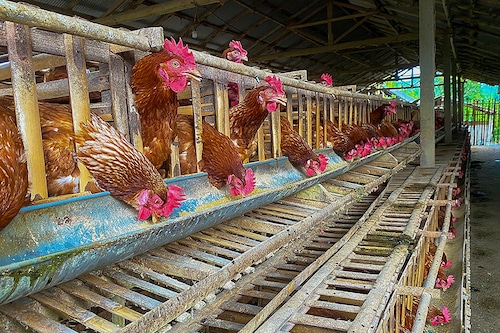How animal cruelty harms humans
Close to 4 billion animals in different sectors face extreme cruelty, and has direct impact on public health, labour welfare and climate resilience, says report


The India Animal Fund and Dasra released a report on Tuesday titled ‘Our shared future: Securing animal welfare, human wellbeing, and sustainability in India’, which highlights the crucial role of animal welfare within India"s socio-economic and ecological systems. The report demonstrates how animal welfare is closely linked with public health, labour welfare, and climate resilience.
The report looks at animals in different sectors, such as farm animals in the agriculture and allied sectors, working animals such as bovines, equids, camels and elephants, animals used in experimentation (about 1.2 million), and homeless animals including cats, dogs, horses, donkeys, and cows, most of which are abandoned and inhabit public places.
Let’s take a look at some numbers:
With regards to environmental impact, the report highlights that livestock farming accounts for 14.5 percent of global greenhouse gas emissions and significantly contributes to habitat destruction and pollution. Industrialised farming demands extensive land and fodder, leading to deforestation and ecological imbalances. For instance, intensive fishing practices have disrupted the ecological balance of aquatic environments. Additionally, increased pollution from runoffs associated with animal farms, slaughterhouses, and related facilities, along with improper waste management, contaminates water, soil, and air. This pollution negatively impacts nearby communities and the natural resources they depend on.
The report also examines the connection between animal welfare and labour welfare workers who frequently interact with animals often face occupational hazards and job insecurity, worsened by unsafe and inequitable working conditions. Child labour is also a critical issue in this sector, with cattle products frequently produced under exploitative conditions.
The report proposes a path to significantly improve animal welfare, focusing on four foundational pillars: Awareness, capital, talent, and policy. It stresses on the importance of developing a thorough, contextual understanding of animal welfare, emphasising the vital role that individual and community awareness plays in transforming practices. By increasing knowledge about the integration of animals into intensive systems and fostering greater empathy for animals as sentient beings, the report advocates for embedding animal welfare into everyday thinking and consumption practices.
More specifically, regarding capital and talent, the report highlights the significance of advocating for increased strategic financial support and investment in organised, intersectoral animal welfare initiatives. This involves enhancing the capacities of on-ground practitioners and promoting collaborations among academia, industry, and government to accelerate the adoption of cruelty-free practices and innovations.
First Published: Jun 25, 2024, 15:40
Subscribe Now